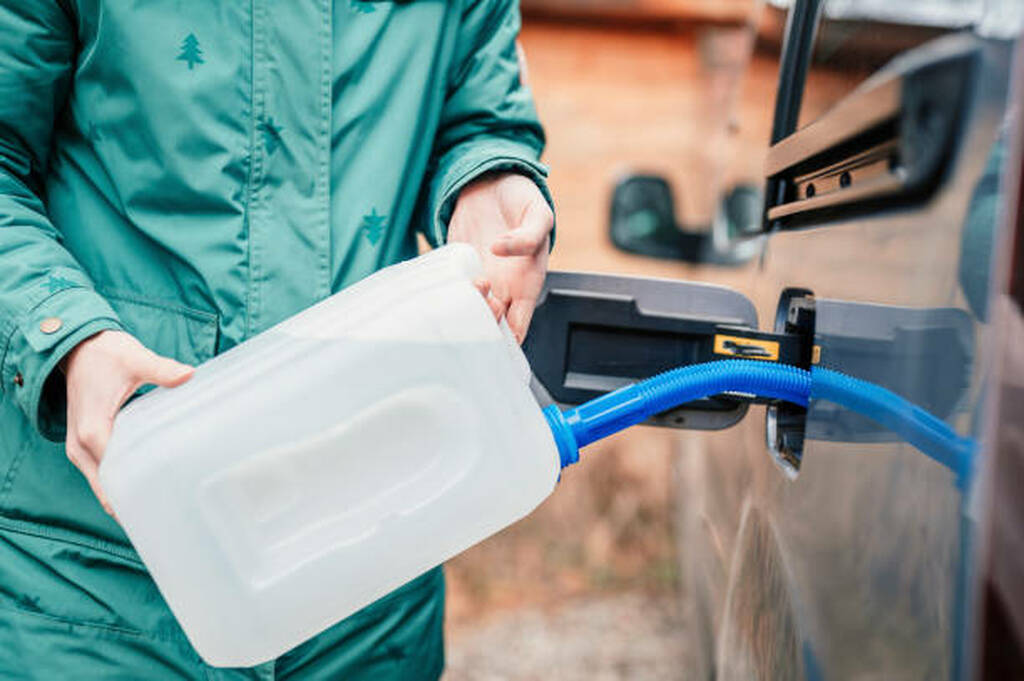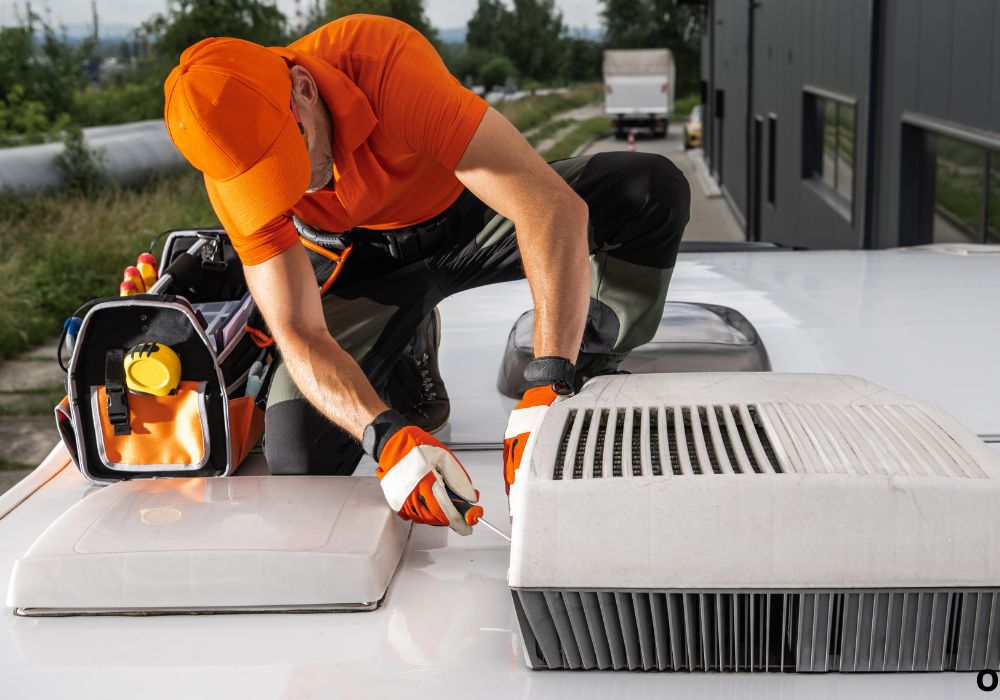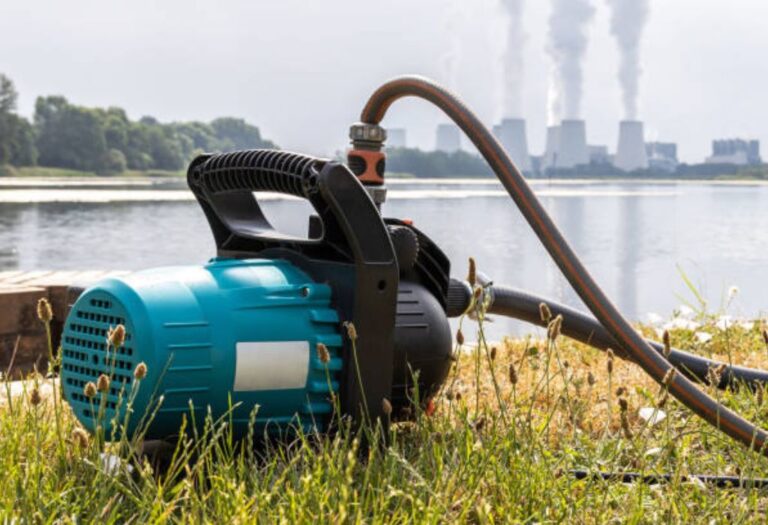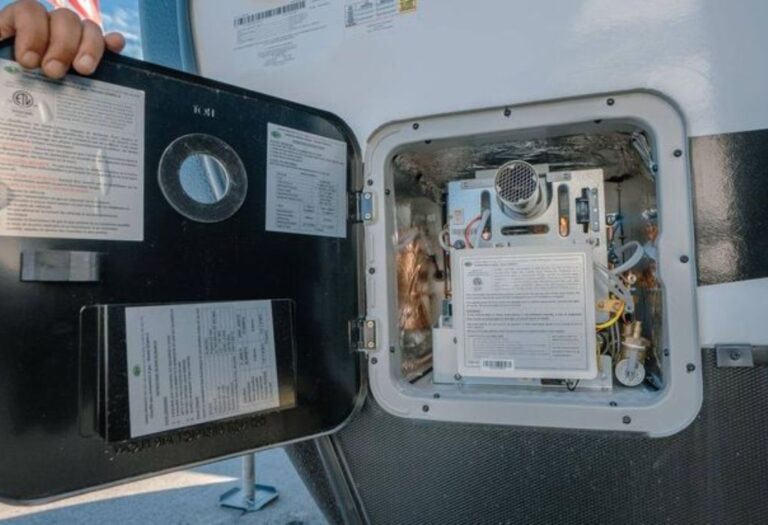How to Carry Extra Water for Your RV Safely and Efficiently
You’re halfway through a peaceful camping trip, miles from any city, when you notice your RV’s fresh water gauge dipping close to empty. The sun is still high, the scenery perfect, but you suddenly realize you may have to cut your trip short.
This is a common moment for many RV owners, especially those who love boondocking or exploring off-grid destinations. The solution is simple but powerful: carry extra water for your RV.
Having additional water storage means more freedom, longer stays, and fewer worries about running dry. Whether you’re camping in the desert, up a mountain, or deep in a national forest, it’s your backup plan for comfort.
In this complete guide, you’ll learn how to carry extra water for your RV, the best storage methods, safety tips, transfer techniques, and how to calculate exactly how much water you need.
Why Carry Extra Water for Your RV

Water is one of the most critical resources on any RV trip. It’s used for cooking, drinking, cleaning, showering, and flushing — daily tasks you can’t skip.
Most RV fresh tanks hold between 25 and 100 gallons, depending on the vehicle’s size. For a couple traveling for several days, that’s often not enough.
When camping without hookups, having extra water can easily extend your stay by three to seven days. According to RVLife Magazine, around 65 percent of boondockers carry portable water containers on every trip.
Extra water also gives you flexibility when you find a beautiful remote spot and don’t want to leave just to refill your tank.
Simply put, carrying extra water means more freedom, comfort, and peace of mind on the road.
Understanding RV Water Needs
Before figuring out how much extra water to bring, you must understand how much you actually use.
On average, an RV traveler consumes 3–5 gallons of water per person per day for essentials like drinking, cooking, and basic hygiene. Showers can double that number.
If you have a 40-gallon tank and two people onboard, you might run out in just four days without conservation.
By carrying extra 20–30 gallons, you can comfortably extend your stay by nearly a week.
Tracking your water usage helps you plan more accurately and avoid both overpacking and underestimating your needs.
Best Containers for Carrying Extra Water
The container you choose plays a huge role in convenience and safety. The most common options are water jugs, portable tanks, and collapsible bladders.
Rigid jerry cans or plastic containers (5–10 gallons) are durable, easy to stack, and widely available at camping stores. They are perfect for moderate water needs and short trips.
Collapsible bladders are great for saving space. When empty, they fold flat, which is ideal for small RVs or van conversions. Some models can hold 25–50 gallons while remaining lightweight when empty.
If you travel in a pickup truck or large motorhome, consider installing a portable auxiliary tank in the truck bed. These tanks can hold up to 100 gallons and are perfect for extended off-grid camping.
Whichever option you choose, make sure it’s BPA-free and labeled as food-grade to ensure water safety.
How to Secure Extra Water Containers During Travel

Transporting water means managing heavy, shifting loads. A gallon of water weighs about 8.34 pounds, so even a 10-gallon container adds over 83 pounds.
Always secure containers close to the floor to maintain balance and prevent tipping. Use ratchet straps or bungee cords to hold them in place, especially if they’re in the back of a truck or cargo area.
If possible, distribute weight evenly between both sides of the vehicle to avoid imbalance during turns or braking.
Avoid placing containers on high shelves or over axles where movement could cause stress or leaks.
Proper storage not only keeps your RV stable but also prevents dangerous spills or damage during travel.
Transferring Water into Your RV Tank
Once you’ve stored your extra water, you’ll need a reliable way to transfer it into your RV’s freshwater tank. There are two main methods: gravity feed and pump-assisted transfer.
The gravity method is simple. Place your water container on an elevated surface higher than your RV’s fill port. Connect a clean drinking-water-safe hose and let gravity do the work.
The pump method uses a 12V water pump (available at most RV supply stores) to move water from your container into the tank. This is ideal when your containers can’t be lifted or placed above the fill level.
Always use a potable water hose — never a garden hose — as garden hoses may contain chemicals unsafe for drinking.
Before transferring, check that your RV’s tank vent is open so air can escape and prevent airlocks.
How Much Extra Water Should You Carry
The amount of extra water you need depends on trip duration, climate, and how efficiently you use water.
Here’s a general guide:
- 1–2 people for 3 days: 10–15 gallons extra
- 2–4 people for 5–7 days: 20–40 gallons extra
- Larger families or long boondocking trips: 50+ gallons
If you plan to shower daily or wash dishes frequently, increase that estimate.
In hotter climates, water use doubles due to dehydration and cooling needs. Keep that in mind when calculating capacity.
It’s better to have too much water than to run out in the middle of a trip.
Using Portable Pumps and Water Bladders
Portable transfer pumps make refilling easy without lifting heavy containers. Most run on 12V DC power, so they can plug directly into your RV’s battery or cigarette outlet.
A common setup includes a collapsible bladder that stores water in the truck bed and a pump connected via hose to refill the RV tank.
Some bladders even come with integrated valves and nozzles, turning the refill process into a quick, clean operation.
When using bladders, ensure they’re placed on a flat, secure surface to prevent shifting during travel.
This setup is ideal for those who prefer longer off-grid stays without driving to refill stations.
Water Safety and Cleanliness
Keeping your extra water clean is as important as carrying it. Contaminated water can cause illness and ruin your trip.
Always start with potable water from a trusted source, such as a campground spigot or municipal line. Avoid filling from rivers, lakes, or unknown wells unless filtered or treated.
Before each trip, rinse your containers with a mild bleach solution (1 tablespoon of bleach per gallon of water), then rinse thoroughly with clean water.
Keep all hoses capped when not in use, and never mix fresh water containers with gray or black water systems.
Labeling containers as “Fresh Water Only” prevents confusion during quick setups.
Weight and Balance Considerations
Carrying water adds significant weight to your RV, which affects fuel economy and handling.
Before loading, check your vehicle’s GVWR (Gross Vehicle Weight Rating) and ensure you don’t exceed it when tanks are full.
If you’re towing a trailer, distribute weight evenly to maintain proper tongue weight and avoid sway.
Driving with full containers may reduce fuel efficiency by 1–2 miles per gallon, depending on size and terrain.
Whenever possible, fill your extra containers closer to your destination to minimize hauling heavy loads over long distances.
Storing Extra Water While Camping
Once you’ve arrived at your site, store extra water in shaded areas to prevent algae growth and reduce evaporation.
Avoid leaving containers in direct sunlight, as UV rays can degrade plastic and warm the water, promoting bacterial growth.
Keep containers sealed tightly and clean off dust or dirt that may collect around the caps.
If you’re staying long-term, rotate usage by emptying older containers first to ensure freshness.
This simple maintenance routine ensures your water stays clean and ready throughout your trip.
Using Filters and Purifiers for Backup
Even when carrying extra water, it’s smart to have backup filtration. Portable filters and UV purifiers can turn questionable water sources into safe drinking water.
Products like Berkey filters, Camco TastePure systems, or LifeStraw bottles are great for emergencies or extended trips.
If you’re drawing water from natural sources, always use a two-stage process: first filter, then purify.
Filtration removes sediments and bacteria, while UV or chemical treatment kills remaining microorganisms.
With these tools, you’ll never be stuck without clean water, no matter how remote your location.
Maintenance and Cleaning of Water Containers
After every trip, empty and rinse all containers thoroughly.
Allow them to dry completely before storing to prevent mold and odor. For deep cleaning, mix a cleaning solution of 1 cup of baking soda with a gallon of water and rinse several times.
Inspect containers for cracks, leaks, or loose caps before the next trip. Damaged containers can cause contamination or water loss.
If you use bladders, roll them up carefully and avoid folding sharp corners to preserve material life.
Clean containers equal safe water and worry-free camping.
Common Mistakes to Avoid
One of the most common mistakes RV owners make is using non-potable containers for fresh water. Always check for “food grade” or “drinking water safe” labels.
Another mistake is mixing hoses — using the same hose for flushing the black tank and refilling fresh water can cause cross-contamination.
Many also forget to secure containers properly, leading to leaks or damage while driving.
Finally, don’t overfill your RV tank or containers. Overfilled tanks can expand and crack under pressure or cause water to overflow into electrical components.
Avoiding these small errors ensures safe and efficient water management.
Environmental Considerations
Carrying water responsibly also means thinking about the environment. Avoid spilling or dumping gray water in undesignated areas.
Use biodegradable soaps when washing dishes or showering to reduce ecological impact.
If you use bladders or containers long-term, choose durable materials instead of disposable plastics to minimize waste.
According to the Outdoor Industry Association, proper water management reduces campsite pollution by up to 40 percent during extended stays.
Being prepared with extra water helps you camp responsibly while protecting nature for others to enjoy.
FAQs
1. How much water should I carry for a 5-day trip?
Plan for about 3–5 gallons per person per day, plus extra for cooking and cleaning.
2. Can I use gas containers for water storage?
No, only use containers marked for drinking water. Fuel containers are unsafe and can contaminate your supply.
3. How do I clean a collapsible water bladder?
Rinse with a baking soda and water mix, then air dry completely before storage.
4. Can I store extra water inside my RV?
Yes, but only in secure areas where weight won’t shift. Avoid high shelves or soft flooring.
5. Is it safe to freeze water in containers for storage?
Only if you leave expansion space. Overfilled containers can crack when frozen.
6. Can I fill containers from campground spigots?
Yes, most are potable. Use a clean drinking-water hose and sanitize fittings first.
7. Do collapsible bladders leak easily?
Quality models don’t, but avoid dragging or puncturing them on rough surfaces.
8. How long can water stay fresh in containers?
Up to six months if stored sealed, cool, and away from sunlight.
9. Should I carry gray water separately?
Yes, always keep gray or wastewater containers separate from your fresh supply.
10. Can I add bleach to stored water to keep it clean?
Yes, add 1 teaspoon per 10 gallons of water to prevent bacterial growth.
11. What pump size is best for transferring water?
A 12V pump with a flow rate of 1–3 gallons per minute is sufficient for most setups.
12. How do I prevent algae growth in containers?
Keep them shaded, clean, and filled with treated or potable water only.
13. Can I store water in metal containers?
Yes, stainless steel containers are safe but heavier and more expensive.
14. Does carrying extra water affect RV mileage?
Yes, each additional 50 gallons adds about 400 pounds, which may reduce mileage slightly.
15. What’s the easiest way to transfer water without electricity?
Use gravity-fed systems or siphon hoses for manual transfers.
Conclusion
Carrying extra water for your RV is not just smart — it’s essential for freedom and comfort on the road. With proper planning, you can explore longer, stay off-grid, and avoid the stress of running out.
Whether you use jerry cans, portable tanks, or collapsible bladders, the key is safety, cleanliness, and efficient storage.
By following these best practices, you’ll have a reliable water supply for cooking, cleaning, and living comfortably no matter where your adventure leads.
For every RV traveler, learning how to carry extra water is one of the most practical skills to master before hitting the open road.
I’m David R. Coleman, the founder, lead writer, and lifelong tool enthusiast behind GarageToolPro.com. With years of experience in automotive repair, woodworking, and home DIY projects, I created this platform to share practical tips, detailed tool reviews, and step-by-step guides that help mechanics, hobbyists, and homeowners get the job done right the first time.






